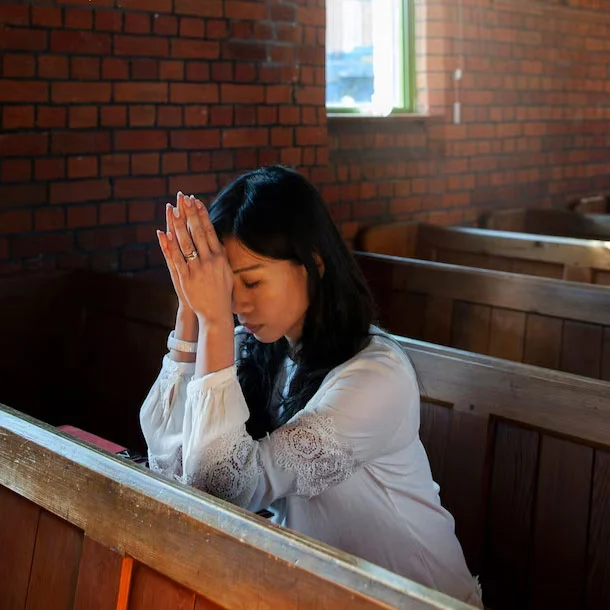


In 330 AD the Roman Emperor Constantine issued an edict giving full liberty to Christians to build churches! The joy of the Christians found expression in a new and unique form of architecture. Ecclesiastical artists and craftsmen using their ingenuity and imagination composed great anthems in sculpted pieces, poetry in woodwork, and chorales in the brilliantly stained-glass windows. Almost fifteen hundred years later in 1813, the license was issued to construct the Church in Secunderabad.
A few years later, the Church of St. John the Baptist was consecrated and dedicated, to the Glory of God. St. John’s Church served the spiritual needs of the British Forces stationed at Lancer’s Line, Secunderabad. Rev J. Brachenbury was the first Chaplain.
At the entrance is the Belfry, separated from the main structure was constructed in 1923. A noted philanthropist Dewan Bahadur Sett Ramgopal who contributed regularly to the needs of the Church built the Belfry.


St. Johns Church is cruciform in shape. The Rangoon Teak wooden ceiling is supported by graceful columns designed according to a strict rule and order is known as The Tuscan Order, which is a simplified version of the Doric Order. The benches in the pews in the nave are made of Rangoon Teak wood. Some of them are as long as 30 feet!
During the Parade Service held every Sunday, the rifles of the armed forces were placed outside the Church in tripod formation. However, after the great Indian Mutiny, these rifles were appropriated by the mutineers. The General Officer Commanding of the British Forces was obliged to resort to alternate arrangements. Rifle Rackets were provided at each pew! Military Officers, Non-commissioned Officers, Soldiers of the British Army, worshipped at St, John’s Church, as also the Railway Officers of the Nizam Warranted State Railway. Indian Christians along with a few British civilians were accommodated in the South Wing of the Church. The Military Engineering Service attended to the maintenance of St. John’s Church.
From the day of its consecration, St. John’s Church has been rich in gifts which accounts for the singular completeness of its beauty. To the right of the main entrance is the Baptism Font sculpted from a single piece of marble. The Font boasted of a handsome brass font cover; approximately three feet high exquisitely crafted and fashioned, and embedded with stones. The Font cover was dedicated to the Church in 1905. Unfortunately, in recent times the Font cover found its way into the hands of those who do not realize its value. But we hope to get the Font cover back someday. The Bronze Eagle-shaped lectern used for reading the word of God is supported on a brass stand based on black granite.
Those who hope in the Lord will renew their strength. They will soar on the wings like eagles. (Isaiah 40:31)
Just as the power of flight of the eagle is unsurpassed, we hope that the word of God will take wing, spread far and wide, and bear much fruit.
It was only in 1914 arrangements were made for the introduction of electric lights. However, the Bank has made way for the domes only in 1918 after the war. In 1914 the aisles and open spaces were tiled with Minton tiles aesthetically patterned. Marble steps were laid from the Chancel to the Sanctuary. And new telescopic brass altar rails were erected. One tends to overlook, at the foot of the Altar, near the brass rail, three circular pieces of art floor that cover the entire floor with Minton tiles of the Pascal Lamb and the symbols Alpha and Omega on either side. “O Lord open thou our lips And our mouth shall show forth. Thy Praise” The above text is on the steps leading up to the chancel. A reminder that should be our constant prayer.
The Military band that was in attendance at the Parade Services on Sundays, had the effect of drowning the voices, resulting in the congregation had no desire to sing against the band. The Organ was an accompaniment to the Parade Services resulted in a real hearty response to singing. Thus, the Pipe Organ became an integral part of St. John’s Church. The Tracker Action Great Organ was built with voluntary contributions from the members of the Church. Additional pipes were added by different families as a thanksgiving. The Lieblick Gedackt Stop and the Gamba Stop and twelve pipes were added to the Great Organ in 1916. The Great Organ has a simple organ case correct in form, contour, and principles. This conceals the pipework and keeps out the dampness and dust. Carvings and shades relieve the monotony.
We thank God for all those worshiped in this Church and who have left us this heritage. We thank God for all our members, cosmopolitan in status, whose spirit of serving and giving is as strong as ever. Our sincere thank to all our members and well-wishers who according to their ability and opportunity has given of their time, talents, and tithes – begin and complete the challenging, demanding work on the roof and interiors. A special word of appreciation to Mr. I.P.P. Prabhakar Rao, Mr. Y.S. Purushotham and Mr. N.S.J Davadatham were supervising every phase of work executed. We also thank Rev. B Joseph for his co-operation and valuable advice. Our undying gratitude to Rt. Rev. B. P. Sugandhar for the continued encouragement and support extended to us throughout this period. Praise be to the Lord our God from everlasting to everlasting… Amen,
Mr. T.V. Comfort, Member of the Royal School of Church Music and Organist and Music Co-ordinator for over six decades installed the third manual. Atop the chancel wall is a circular window, fitted with stained glass of the figure of St. John the Baptist, presented to the Church as a thanksgiving in 1905. The Altar Reredos and wood paneling were given by the congregation and friends of St. John’s Church, in thankful remembrance of the signing of the Peace Treaty after the Great war 1914-1918. A completely new set of red altar furniture and two Bishop’s chairs, all fine pieces of craftsmanship were presented about the same time.
Chaplains and Presbyters appointed at the Church of St. John the Baptist from the Year 1813:
| S.No | Name | Period |
|---|---|---|
| 131 | Rev. K. James Cecil Victor | 2020 – Present |
| 130 | K. M. Charles Wesley | 2016 – 2020 |
| 129 | M. Wilson | 2012-2016 |
| 128 | B. Moses Shanthi Kumar | 2010-2012 |
| 127 | G. Suresh Kumar | 2007-2010 |
| 126 | P. Surya Prakash | 2005-2007 |
| 125 | K. James Cecil Victor | 2004-2006 |
| 124 | B. Joseph | 1994-2004 |
| 123 | Prasanna Kumar | 1993-1994 |
| 122 | B.P. Sugandar | 1982-1993 |
| 121 | G. Devasahayam | 1981-1982 |
| 120 | R.A. Marsh | 1975-1981 |
| 119 | G. Shaw | 1973-1975 |
| 118 | R.A. Marsh | 1972-1973 |
| 117 | T. Krishna Rao | 1972-1973 |
| 116 | G. Shaw | 1968-1972 |
| 115 | A.C. Abraham | 1967-1968 |
| 114 | A.J. Barnard | 1965-1967 |
| 113 | Richard Lipp Bp. | 1963-1965 |
| 112 | E.W. Gallagher | 1961-1963 |
| 111 | A.M. Payler | 1961-1963 |
| 110 | Bunyon Joseph Bp. 1 | 960-1961 |
| 109 | M.H. Durrani | 1958-1960 |
| 108 | F.C. Philip | 1958-1958 |
| 107 | M.H. Durrani | 1958-1958 |
| 106 | F.C. Philip | 1957-1958 |
| 105 | Bunyon Joseph Bp. | 1956-1957 |
| 104 | F.C. Philip | 1951-1956 |
| 103 | R.J. Inglis | 1949-1951 |
| 102 | Richard Bentinck | 1946-1949 |
| 101 | George A. Wilson | 1945-1946 |
| 100 | Lourence S. Jackson | 1944-1945 |
| 99 | Robert S. Waterson | 1943-1944 |
| 97 | T.V. Perry | 1943-1943 |
| 96 | Robert Collier | 1940-1943 |
| 95 | William G. Hayward | 1938-1940 |
| 94 | Lourence S. Jackson | 1935-1938 |
| 93 | Rhys James | 1934-1935 |
| 92 | A.J. Mortlock | 1931-1934 |
| 91 | Maurice Clarke | 1928-1931 |
| 90 | H. Hacking | 1926-1928 |
| 89 | George A. Wilson | 1926-1926 |
| 88 | Charles E. Wheeler | 1923-1926 |
| 87 | W.R. Chrichton | 1922-1923 |
| 86 | H.H. Flynn | 1920-1922 |
| 85 | Rhys James | 1920-1920 |
| 84 | H.H. Flynn | 1918-1920 |
| 83 | Rhys James | 1918-1918 |
| 82 | H.H. Flynn | 1916-1918 |
| 81 | H. Hacking | 1916-1916 |
| 80 | B.D. Beeley | 1914-1916 |
| 79 | F.W. Heycock | 1914-1914 |
| 78 | G.A.A. Wright | 1914-1914 |
| 77 | F.W. Heycock | 1912-1914 |
| 76 | B.D. Beeley | 1912-1912 |
| 75 | S.J. Evans | 1912-1912 |
| 74 | B.D. Beeley | 1910-1912 |
| 73 | F. Nuttal | 1910-1910 |
| 72 | B.M. Morton | 1909-1910 |
| 71 | W.A.H. Parker | 1909-1909 |
| 70 | B.D. Beeley | 1909-1909 |
| 69 | W.A.H. Parker | 1907-1909 |
| 68 | H.E.M. Atkins | 1904-1907 |
| 67 | B.M. Morton | 1903-1904 |
| 66 | A.H.B. Brittain | 1902-1903 |
| 65 | H.H. Flynn | 1902-1902 |
| 64 | A.H.B. Brittain | 1901-1902 |
| 63 | B.M. Morton | 1901-1901 |
| 62 | A.H.B. Brittain | 1900-1901 |
| 61 | C.F. Breay | 1898-1900 |
| 60 | E. Bull | 1898-1898 |
| 59 | F.N. Crowther | 1896-1898 |
| 58 | C.H.L. Wright | 1895-1896 |
| 57 | A.A. Sharp | 1895-1895 |
| 56 | C.H.L. Wright | 1894-1895 |
| 55 | A.J. Johnes | 1893-1894 |
| 54 | C.H.L. Wright | 1893-1893 |
| 53 | A. Bird | 1893-1893 |
| 52 | C.H.L. Wright | 1891-1893 |
| 51 | A.H.B. Brittain | 1889-1891 |
| 50 | C.H.L. Wright | 1888-1889 |
| 49 | C.E. Whitley | 1888-1888 |
| 48 | C.H.L. Wright | 1887-1888 |
| 47 | F.C. Gittons | 1886-1887 |
| 46 | C. Smith | 1886-1886 |
| 45 | Noel Platt | 1886-1886 |
| 44 | F.C. Gittons | 1884-1886 |
| 43 | R.J. Brandon | 1882-1884 |
| 42 | O.V. French | 1881-1882 |
| 41 | R.J. Brandon | 1878-1881 |
| 40 | S. Morley | 1875-1878 |
| 39 | J. Frank Brown | 1872-1875 |
| 38 | A. Taylor | 1871-1872 |
| 37 | T.A.C. Pratt | 1871-1871 |
| 36 | W.B. Powell | 1867 |
| 35 | R.C.W. Raban | 1866 |
| 34 | C.W. Januton | 1865 |
| 33 | George Warlow | 1864 |
| 32 | C.D. Gibson | 1863 |
| 31 | C. Rhenius | 1863 |
| 30 | George English | 1863 |
| 29 | Thomas Foulkes | 1862 |
| 28 | H. Pigot James | 1861 |
| 27 | A. Kinlock | 1860 |
| 26 | T.A.C. Pratt | 1860 |
| 25 | A.W. Pearson | 1859 |
| 24 | John Gorton | 1859 |
| 23 | Richard Firth | 1858 |
| 23 | Richard Firth | 1858 |
| 22 | J. Vivian Bull | 1858 |
| 21 | J.B. Sayers | 1857 |
| 20 | J.D. Ostrichan | 1856 |
| 19 | R. Murphy | 1854 |
| 18 | C.D. Gibson | 1850 |
| 17 | Warner B. Ottley | 1848 |
| 16 | John Gorton | 1847 |
| 15 | Edward Kilvert | 1846 |
| 14 | A. H. Alcock | 1845 |
| 13 | Alex John Rogers | 1844 |
| 12 | Frederick William Briggs | 1843 |
| 11 | J.H. Evans | 1840 |
| 10 | R. Wells Whitford | 1840 |
| 9 | Joseph Knox | 1840 |
| 8 | W. Toures | 1839 |
| 7 | John McEvoy | 1834 |
| 6 | William John Aislabie | 1831 |
| 5 | Frederick Darrah | 1829 |
| 4 | James Boys | 1824 |
| 3 | Henry C. Bankas | 1823 |
| 2 | H. Henry Harper | 1819 |
| 1 | J. Bracknbury | 1813 |


Away in an obscure corner of Asia Minor, the greatest event of world’s history had taken place: The advent of Jesus Christ and the founding of the Christian Church.
10-5-153/24C
East Maredpally Road,
East Nehru Nagar, Secunderabad
Telangana – 500026
Copyright © 2024 stjohnscsi.org – All rights reserved – Supported by Tecnolynx